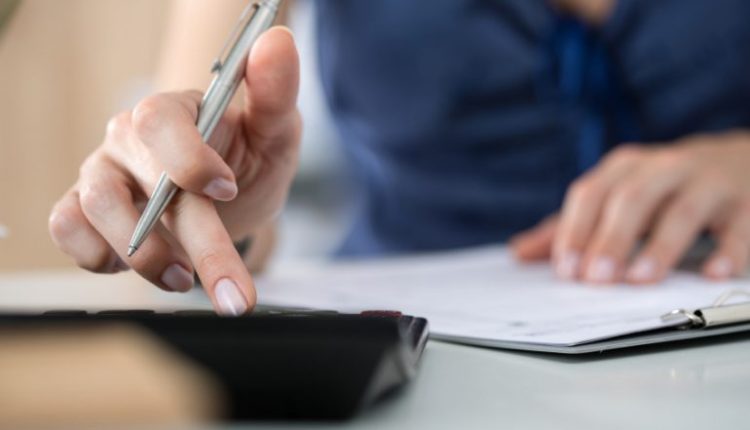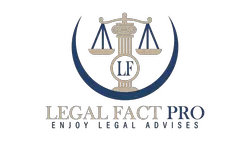
How to File Bankruptcy without a Lawyer | 7 Ways to File Now
The contents of this web page are for informational and educational purposes only, and nothing you read is intended to be legal advice. Please review our disclaimer before taking action based upon anything you read or see.
Thousands of Americans each year find themselves hesitant to pay their obligations and unable to finance bankruptcy filing. Lawyers’ fees account for most bankruptcy costs, which should sound familiar. So you could be questioning How to file bankruptcy without a lawyer.
It is primarily dependent on the complexity of your situation. If you don’t have many assets and don’t gain more profit, you may be able to file for bankruptcy on your own (without a lawyer). However, although declaring bankruptcy on your own might save you funds, it is a significant endeavour.
You’ll need to gather all of your accounting transactions, submit many documents on time, and interact with your bankruptcy trustee. You’ll also have to familiarize yourself with state and federal legislation.
In this blog, you’ll discover a stage process guide on filing for bankruptcy without hiring a lawyer. This is in addition to a few pointers to make the procedure go as smoothly as possible.
How to File Bankruptcy without a Lawyer

If you’re avoiding debt collectors and tossing invoices you know you should pay, you might like to explore declaring bankruptcy without hiring a lawyer. After all, how can you pay a lawyer if you’re filing for bankruptcy?
Declaring bankruptcy may help you reorganize your debt, halt the irritating phone calls, and keep lenders from acting against you. Suits, evictions, withholdings, and repossession are all examples of this.
Once you’ve determined that bankruptcy is the best financial choice for you, the following tips will be pretty helpful:
Gather all of your documentation
The first step in figuring out how to file bankruptcy without a lawyer is to gather all of your financial paperwork. This will assist you in comprehending your present financial situation.
Get a free credit score report to begin. You are eligible for one free credit report annually from each of the three credit agencies. It’s possible some debts aren’t reflected in your credit report.
Hospital bills, consumer lending, cash advances, and tax obligations are every day. Please note any debts that aren’t included on your credit report so you will not have to search them up while filling out your bankruptcy paperwork.
You’ll need the following papers in conjunction with your credit report:
- Returns from the previous two years
- Payslips or other evidence of earnings for the last six months
- Reports from recent checking accounts
- Latest reports from a retirement account or a trading account
- Performance appraisal or assessments of any property investment you own
Having these papers on hand can assist you in getting a clear view of your financial status.
Attend a credit counselling session
Until the bankruptcy complaint is filed with the court in the six months, everyone who declares bankruptcy must attend a credit counselling course. The system must get completed via a Department of Justice-approved credit counselling firm.
Credit counselling classes like this one will help you figure out if you are genuinely declared bankruptcy or if you can get back up and running with an unofficial payment schedule.
The training takes roughly an hour in advance and may be done online or offline. Based on the vendor, the cost of the activity might vary from $10 to $50.
This charge should get cancelled if your family income is less than 150 per cent of the national poverty line.
You will get a completion certificate after you have completed the course. It should get kept. According to bankruptcy statutes, you must present a duplicate of this certification to the court when filing your bankruptcy documents.
Fill out the bankruptcy paperwork
There are at least 23 different forms totaling over 70 sheets in the bankruptcy paperwork. You will be asked about all you earn, consume, possess, and borrow on the bankruptcy paperwork.
You’ll also provide certain bankruptcy essentials, such as the sort of bankruptcy you’re declaring and whether or not you’re working with a lawyer.
If you engage an attorney, they will fill out the paperwork depending on the data you provide. Check whether you’re qualified to utilize an online bankruptcy solution if you can’t afford to employ a lawyer.
Pay the filing fee
A Chapter 7 bankruptcy costs $338 to file with the Federal Court. Whenever the bankruptcy complaint is filed with the court, this sum is usually owed.
If you don’t have the money to cover the filing fee, you may request to settle it in installments once your case is filed. You may request up to four monthly installments. If repaying in installments isn’t an option, you may ask for an exemption using a different form.
Your overall family income should be less than 150 per cent of the poverty threshold to participate. The court will assess whether you are eligible for a waiver under bankruptcy statutes.
This occurs after the filing of your bankruptcy application. If your request is refused, you will most likely be ordered to pay the amount in phases by the court.
Make a copy of your bankruptcy paperwork
You’ll need to obtain your bankruptcy paperwork for the court after completing them. They must be printed on one side alone. The court will not accept double-sided papers. Once the documents are published, you must also sign them.
You’ll need the following items:
- The petition papers, as well as any local paperwork that may be necessary
- Your certificate of debt consolidation
- Obtain a copy of your payslips.
- Attach your fee waivers or payment plan request, if applicable.
Although most bankruptcy courts only need one certified duplicate of the petition, others demand multiple copies. So, before you present your paperwork, phone your area bankruptcy court to discover how many duplicates you’ll need and double-check that you include all of the local documents you’ll need.
Submit your bankruptcy forms to the court
When you go through the doorway of your area courtroom, security officers will meet you and ask you to go through a body scanner. After passing security, proceed to the clerk of court and inform the clerk that you are filing for insolvency. They will collect your bankruptcy paperwork as well as your application money.
Do not provide the court with your financial records or tax filings. Following the lawsuit’s filing, these papers are sent to the trustee.
The clerk will begin working on your issue by capturing and posting your documents to the court’s electronic records center as you stand in line. It usually takes no upwards of 15 minutes to do this task.
When you’re finished, the clerk will summon you to the front station and hand you:
- Your suit is in bankruptcy
- Your bankruptcy regulator’s name
- Appointment with your creditor.
Your lawsuit will be lodged without a lawyer at this stage! Congrats! All collection agencies are now kept at bay by the automatic stay.
Send your trustee documents.
The Chapter 7 trustee is a court-appointed officer in charge of your case. Nonexempt properties may also be liquidated or sold for the satisfaction of your lenders. A bankruptcy trustee is not required in every kind of bankruptcy. However, there is one in Chapter 7 and Chapter 13 situation.
After you file your claim, heed the correspondence you get from the trustee. A letter from the trustee will be sent to you, requesting that you provide them with specific financial records.
Tax filings, payslips, and financial records are all examples of this. You may not be able to acquire a debt relief if you cannot provide the trustee with the needed papers and follow the directions in their letter.
Frequently Asked Questions
Can I file for bankruptcy without getting a lawyer?
Yes. The above tips on how to file for bankruptcy without a lawyer will aid you immensely.
Is it difficult to file bankruptcy on your own?
Before submitting a bankruptcy petition, you’ll need at least an essential awareness of the legal concerns. Other elements that influence how difficult a case will be include:
- Types of bankruptcies
- What is the complexity of your case?
- What is your present economic position?
- If you have additional debts such as college loans, auto loans, childcare, or severance to pay,
Even if your case is straightforward, filing for bankruptcy necessitates the completion of considerable documentation and a thorough understanding of the Bankruptcy Act. As a result, it could be in your best interests to have at least a preliminary discussion with a lawyer to ensure you’re on the proper track.
Is it possible to file for bankruptcy if you don’t have any funds?
To complete your bankruptcy case, you must pay a processing fee and expenses for credit education and budgeting courses. If you don’t have any funds, you may request a fee waiver (in Chapter 7 cases). You may also ask that the amount be included in your repayment plan by the bankruptcy court (in Chapter 13 cases).
When is it a bad idea to file for bankruptcy without representation?
Hiring a lawyer to defend you in bankruptcy is often a good idea. There are two scenarios in which you should always seek legal counsel:
- If Your Chapter 7 Bankruptcy Is Complex
- If you’re declaring bankruptcy under Chapter 13
Conclusion
Finally, unlike a company bankruptcy, a solo debtor does not need the services of a lawyer to petition for bankruptcy relief. However, this isn’t always a brilliant idea. The criteria and advice mentioned above will most likely determine if claiming on your works better.

I’m a driven and accomplished law graduate and post-graduate, passionate about sharing my legal expertise via my blog. I hold a Bachelor’s degree in Law from the University of London (UK) and a Master’s in Law from the University of Derby (UK). Both gave me the foundational knowledge and skills to excel in my chosen career path.
Throughout my academic journey, I have gained extensive knowledge in various fields of Law, including Corporate and Business Law in the USA, Criminal Law, International Law, US Copyright law, and most importantly, American Constitutional law.


Comments are closed.